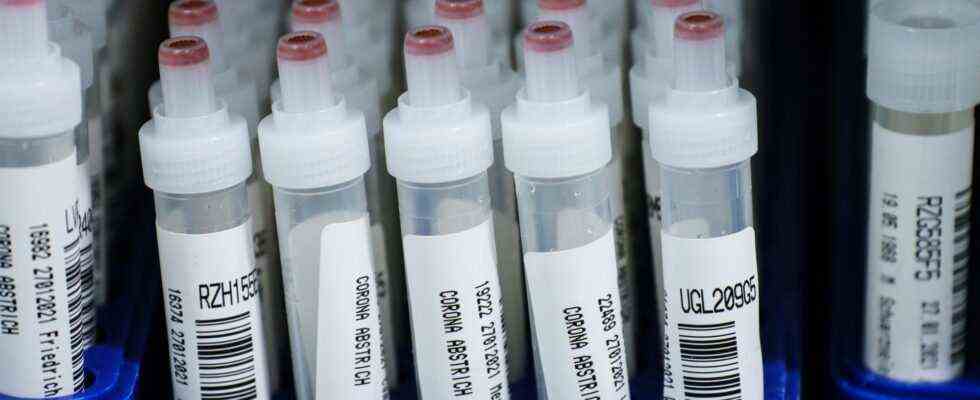Status: 01/16/2022 08:20 a.m
According to the RKI, the seven-day incidence of 515.7 has again reached a high – and rises above the 500 threshold for the first time. Health Minister Lauterbach warns against underestimating the situation in the clinics.
The Robert Koch Institute (RKI) has again reported a peak in the nationwide seven-day incidence. Accordingly, the value of new infections per 100,000 inhabitants and week on Sunday morning was 515.7 – and thus above the threshold of 500 for the first time. For comparison: the day before the value was 497.1. A week ago, the nationwide incidence was 362.7.
Focus currently in the north
The focus of the virus spread is further in northern Germany and there in the city states: According to the RKI, the highest seven-day incidence is still in Bremen with a value of 1401.2. It is followed by Berlin with 965.3 and Hamburg with 831.5. Schleswig-Holstein recorded a value of 665.6. But in Baden-Württemberg, Bavaria, Brandenburg and Hesse, too, the values are now above the 500 threshold again.
Before the start of the omicron wave, most federal states in the north still had incidence values well below the national average.
52,504 new corona infections
The health authorities in Germany reported 52,504 new corona infections to the RKI within one day. This emerges from figures that reflect the status of the RKI dashboard at 4:32 a.m. A week ago there were 36,552 infections. According to the new information, 47 deaths were recorded across Germany within 24 hours. A week ago there were 77 deaths.
The RKI has counted 7,965,977 infections with Sars-CoV-2 since the beginning of the pandemic. The actual total number is likely to be significantly higher, as many infections go undetected.
Lauterbach warns of “difficult weeks”
In view of the omicron wave and the low vaccination rate in Germany, Federal Minister of Health Karl Lauterbach warns of a high number of deaths and massive restrictions on hospital treatment. “We are threatened with very difficult weeks in Germany,” says Lauterbach of “Bild am Sonntag”.
At the moment, it is mainly the younger people with many contacts who are ill. But as soon as the elderly become infected, the number of hospital admissions will increase again. Then the space in the intensive care units and in the normal wards could become scarce. In international comparison, Germany has an older population with many chronically ill people. This is “fire hazard”.
In the newspaper interview, he also said that, in his opinion, compulsory vaccination should include three injections. This is the only way to be protected against all corona variants – at least against serious illness and death. “The obligation to vaccinate must be based on this,” said the SPD politician.
More Covid patients on the normal wards
The German clinics are already feeling the first effects of the omicron wave through more patient admissions with Covid diseases on the normal wards. “We are already seeing this increase in the normal wards in some regions, for example in Bremen, Berlin, Hamburg and Schleswig-Holstein,” says the President of the German Hospital Society (DKG), Gerald Gass, of the “Augsburger Allgemeine”.
If the models come true, one must expect more than 100,000 infected people per day very soon. Many of them would have to be hospitalized. But because of the highly contagious omicron variant, there will be more staff shortages in the clinics. He therefore appeals to general practitioners and specialists to treat patients who do not necessarily have to be treated in hospital as outpatients as far as possible.

